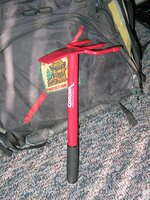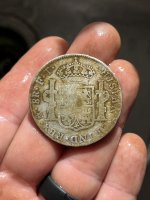CT8620
Jr. Member
So after dragging up gallons of water and/or bringing down heavy buckets of material I'm beginning to think there must be a better way to process the material out of hanging benches/channels that are far away from a water source. Hiking up/down the steep canyons with extra weight has resulted in some near falls and the potential for injury is great. Getting hurt in the middle of nowhere is not high on my list of desired experiences. There really aren't any good flat areas for a drywasher, so my thought now is a metal detector. Has anyone had decent luck with knocking down material, scanning it, pushing it away and repeating? I know I'll be giving up the fine material, if there is any, but I'm assuming (I have no experience yet with MDs) that a decent machine should be able to pick up at least small "picker" size material under a couple inches of dirt, right? Any suggestions on a good bang for the buck MD that would suffice for this? Any info/thoughts are greatly appreciated…Thanks!
CT
CT
Amazon Forum Fav 👍
Upvote
0






